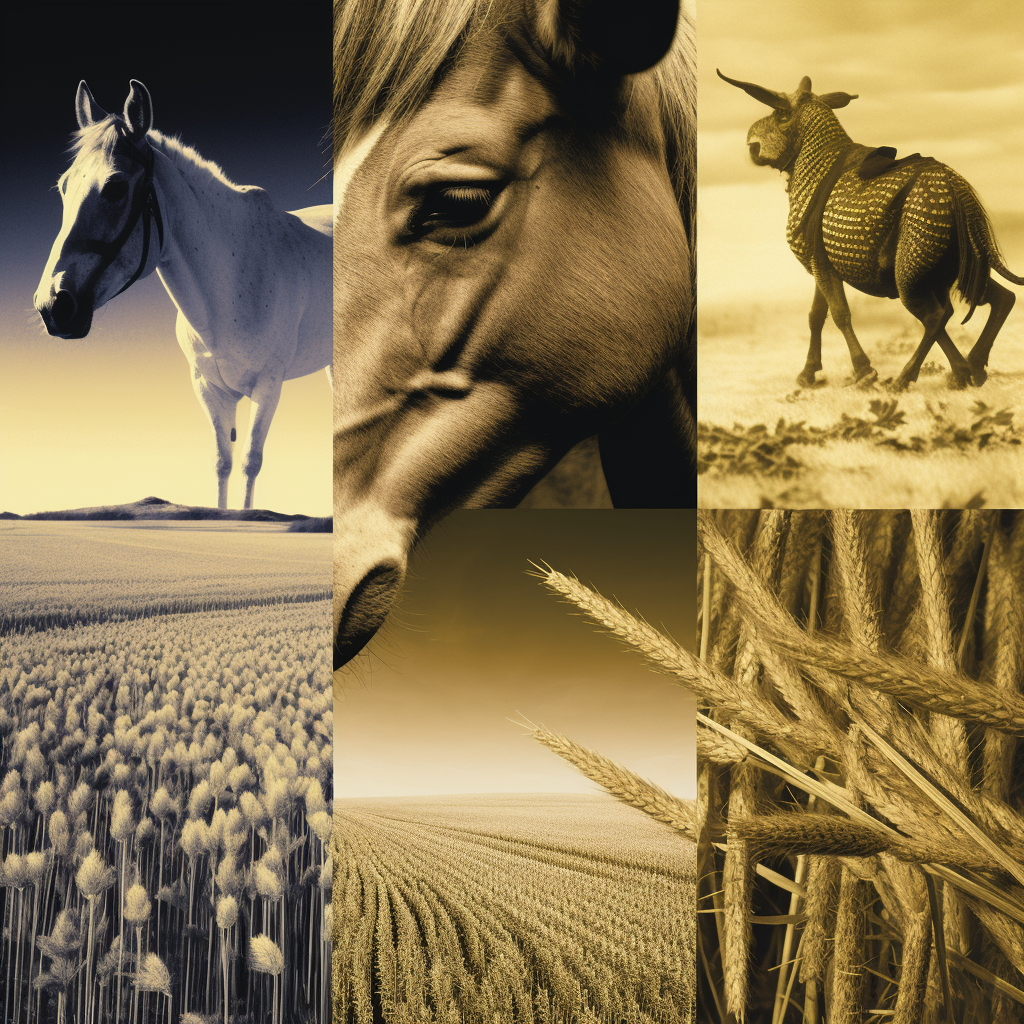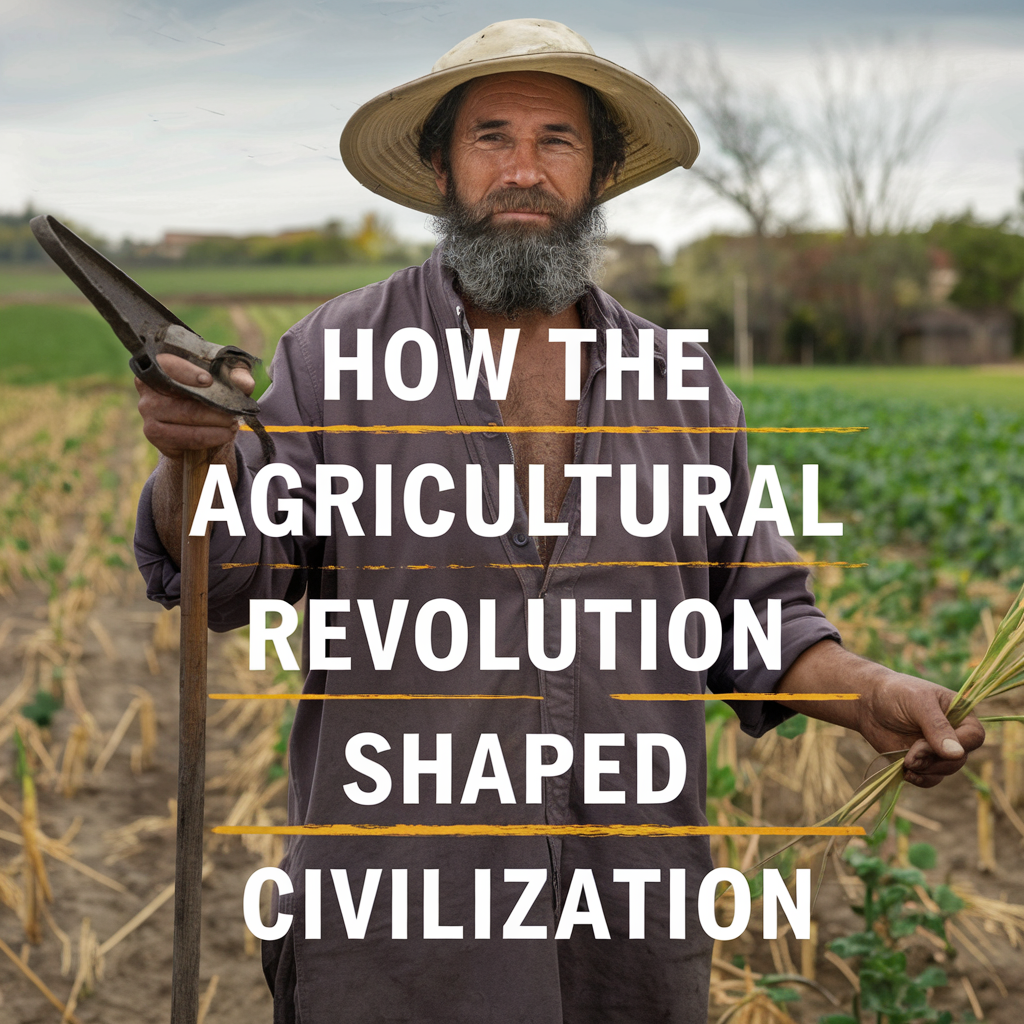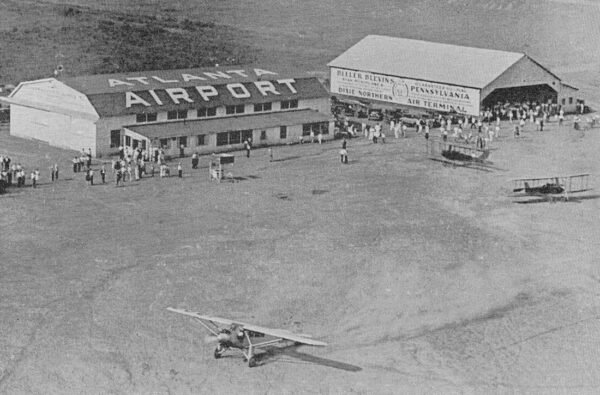Prehistory: Evidence of Early Agriculture
The first evidence of humans exerting control over wild grain traces back to around 20,000 BCE in what is modern-day Israel. This pivotal moment marked the beginning of a journey that would eventually lead to the Agricultural Revolution.

11,000 BCE: Beginning of the Agricultural Revolution
By around 11,000 BCE, there was evidence of planned cultivation and trait selection of rye in Syria, and evidence of the domestication of lentils, vetch, pistachios, and almonds in Greece. This significant shift from foraging to farming was the start of the Agricultural Revolution.
9,500 – 9,100 BCE: Widespread Crop Domestication
By approximately 9,500 BCE, eight key crops, including emmer wheat, einkorn wheat, barley, peas, lentils, bitter vetch, chickpeas, and flax, were domesticated in the Levant. The oldest known agricultural settlement, Klimonas, was established in Cyprus around 9,100 BCE.

9,000 – 8,000 BCE: Domestication of Livestock
The period between 9,000 to 8,000 BCE saw the domestication of several types of livestock. Sheep were domesticated in central and southwest Asia, goats in Iran, and pigs in the Near East, China, and Germany. During this period, farming was fully established along the Nile River in Egypt, and rice and millet were domesticated in China.
7,000 – 6,000 BCE: Expansion of Agriculture
Agriculture expanded into new areas during this period. By 7,000 BCE, agriculture was well-established in Mesopotamia, and there was the first evidence of agriculture in the Indus Valley. Cattle were domesticated in North Africa, India, and Mesopotamia. By 6,000 BCE, there was evidence of agriculture on the Iberian Peninsula, and chickens and llamas were domesticated in India, Southeast Asia, and Peru, respectively.
5,500 – 5,000 BCE: Intensive Agriculture and New Crops
Farmers in Sumeria had developed large-scale intensive cultivation of land, mono-cropping, organized irrigation, and a specialized agricultural labor force by around 5,500 BCE. By 5,000 BCE, rice and sorghum were domesticated in Africa’s Sahel region.
4,000 – 3,000 BCE: Late Developments and Innovations
The domestication of the horse, a significant development in agriculture, took place in Ukraine and Kazakhstan around 4,000 BCE. Ireland saw the oldest known field systems, including stone walls, around 3,700 BCE. By 3,000 BCE, there was evidence of the earliest known use of the ox-drawn ard plow in Egypt.
Lasting Impact of the Agricultural Revolution
The Agricultural Revolution was a pivotal period in human history that saw the transition from nomadic hunting and gathering to settled agriculture. This period laid the foundation for the development of civilization, leading to advancements in technology, the growth of cities, and the eventual rise of modern societies.
As an Amazon Associate we earn from qualifying purchases through some links in our articles.




